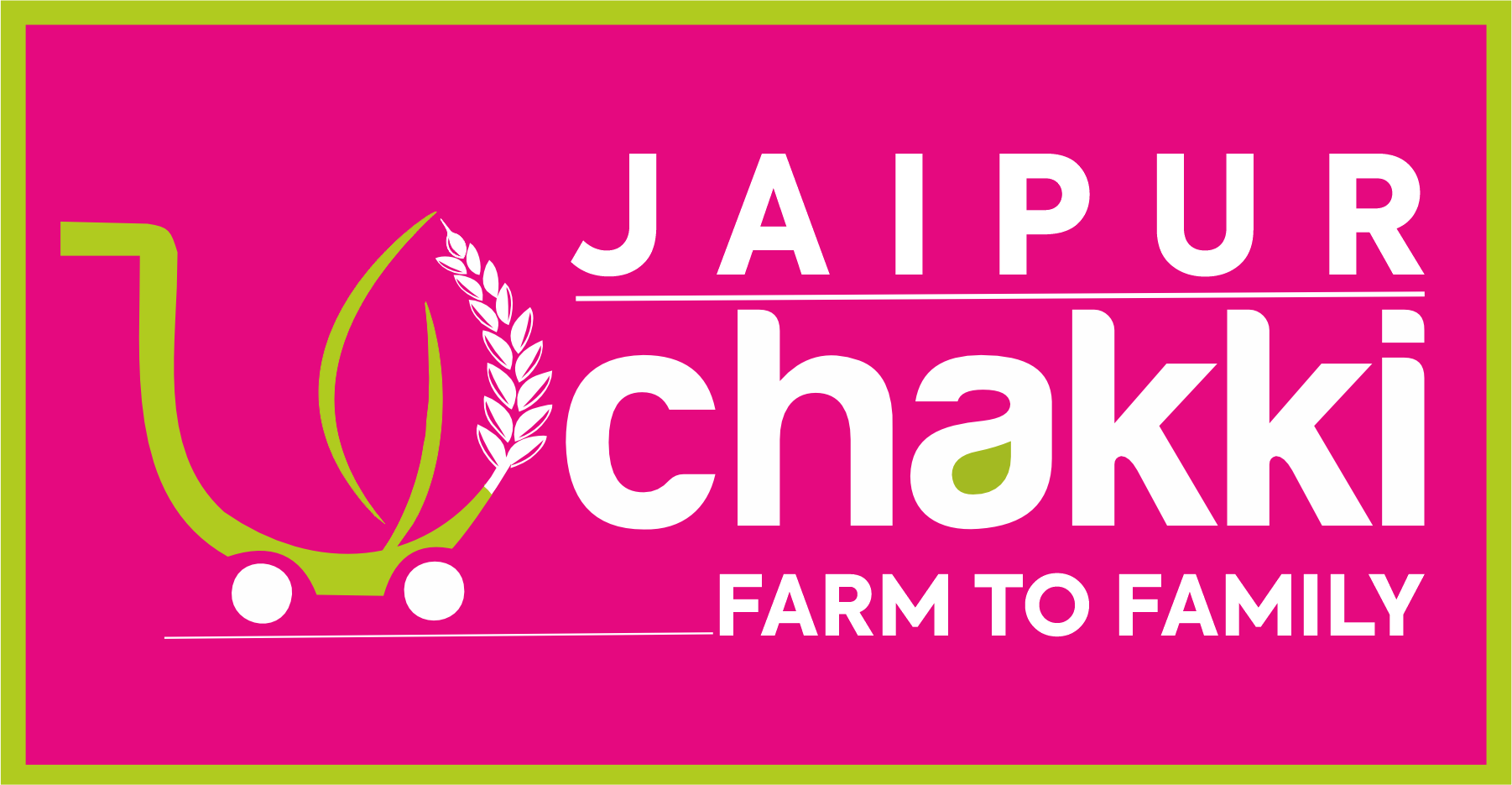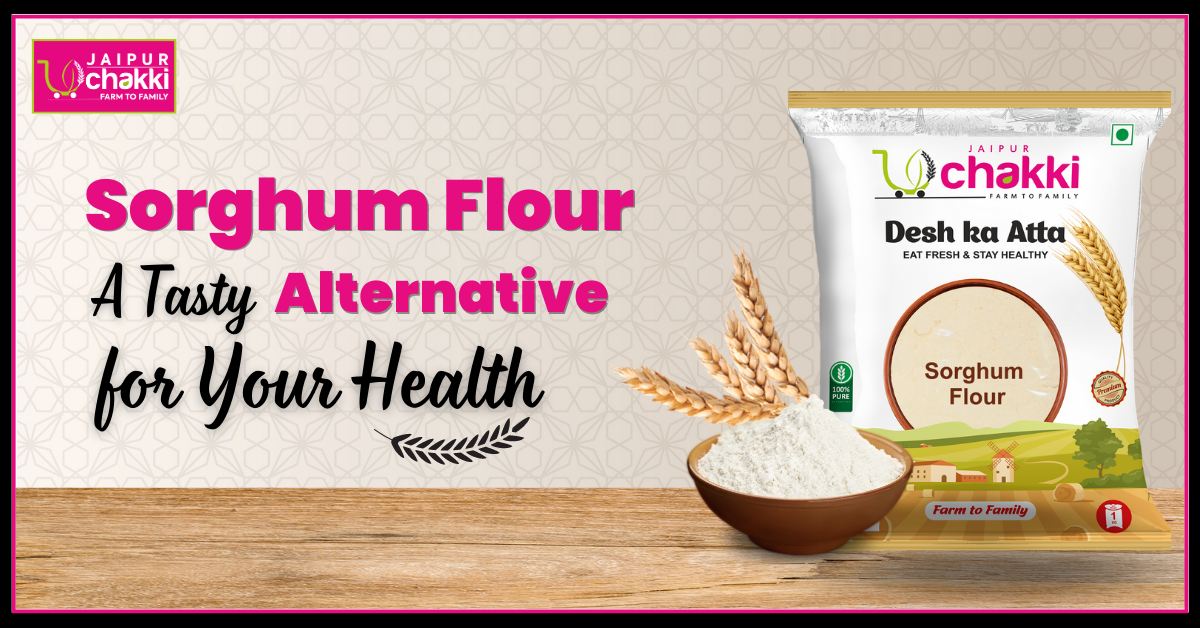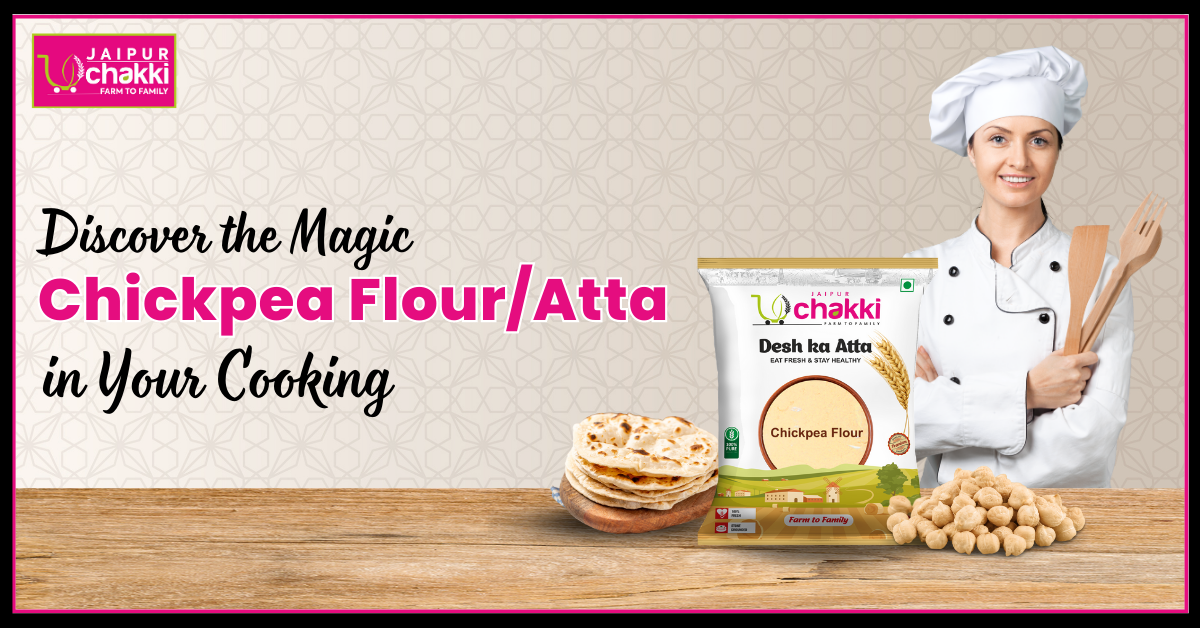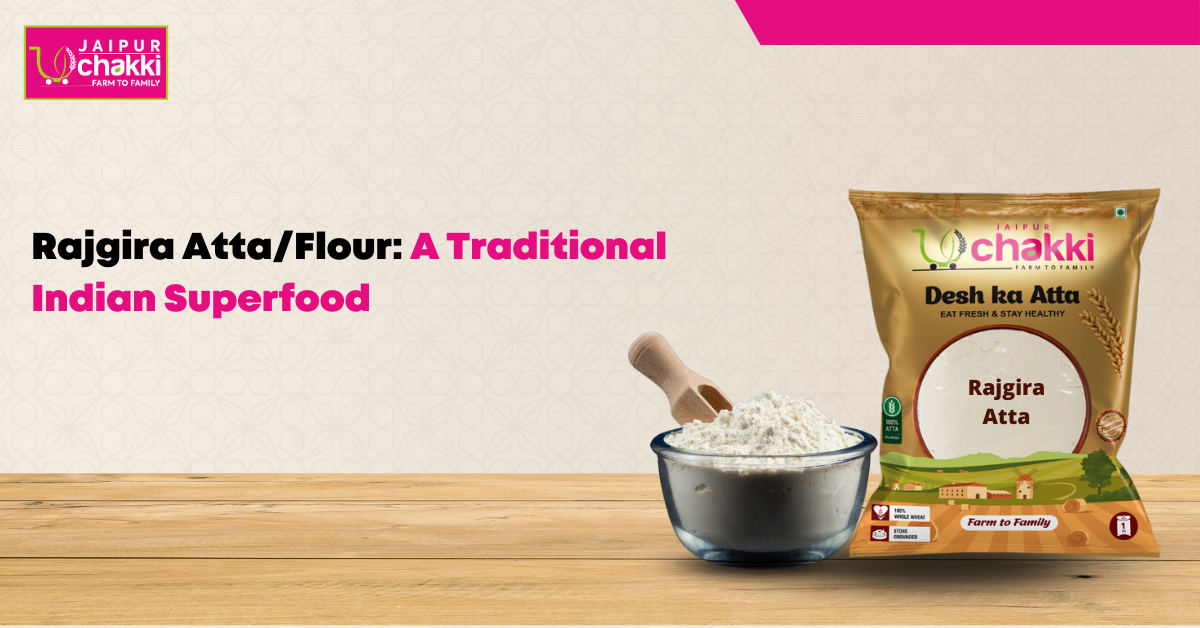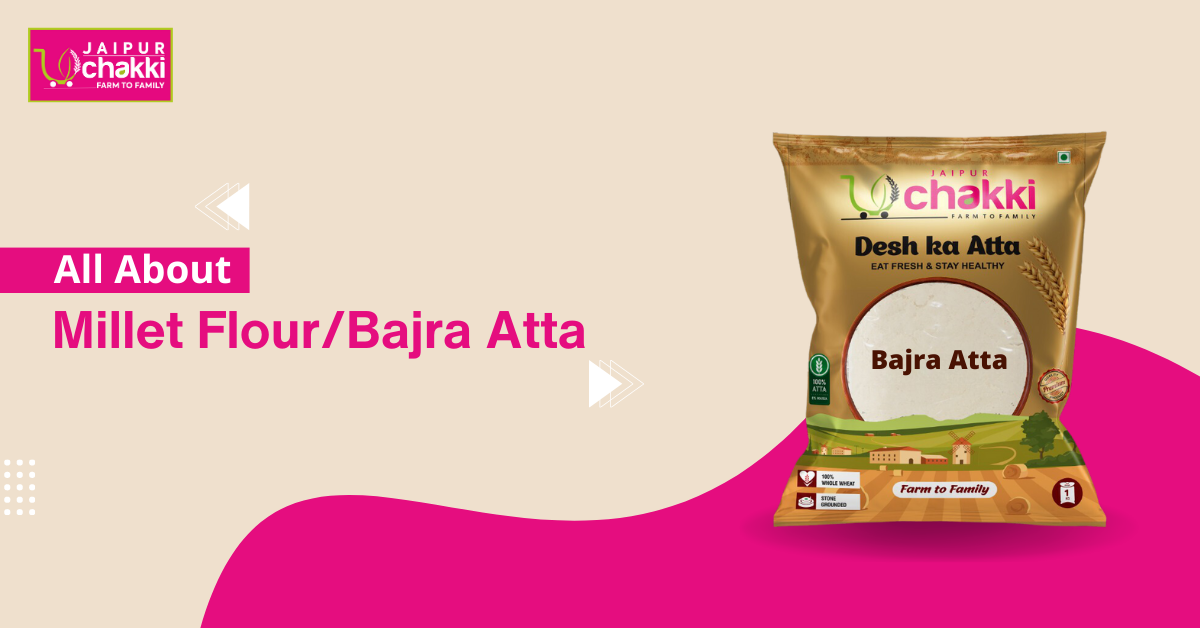Sorghum flour/atta is less well-known than other types of flour, but it has a riveting history that traces back thousands of years. Also known as jowar, this cereal grain has been grown in Africa and Asia for centuries and serves as a food source for various cultures. It is nutrient-rich and a lifeline for generations across the globe.
In fact, it is quickly becoming a favourite flour among health-conscious individuals looking for a nutritious and gluten-free alternative to wheat flour. Packed with fibre, protein, and antioxidants, it’s no wonder that sorghum flour has been gaining more popularity recently. It is also an excellent choice for people with celiac disease or gluten sensitivity. One brand that is already selling gluten-free quality Sorghum Flour is Jaipur Chakki.
So if you are ready to explore the history of sorghum flour from its ancient roots to its modern-day uses, read this blog further.
From its nutritional benefits to remarkable ingredients, let’s explore its versatility in the kitchen. Are you ready?
All About Sorghum Flour/Atta
Sorghum flour is gaining popularity among health-conscious consumers! This gluten-free flour grinds the nutrient-rich sorghum grain into a fine powder. People use it to make various sweet and savoury dishes. It’s a drought-resistant plant with tall stalks grown in many parts of the world, including Africa, Asia, and America.
One of the best things about this flour is its slightly sweet and nutty flavour which enhances the taste of all baked goods. Sorghum flour is an excellent alternative to traditional flour for making bread, muffins, cakes, or other baked goods.
But it doesn’t end here – sorghum flour is also high in essential nutrients! It provides health benefits, which include reducing inflammation, supporting heart health, and aiding digestion.
So, are you ready to integrate this superfood into your diet?
Our blog has all the information you need about sorghum flour’s benefits and how to use it in modern dishes. And we’ve also included tips on what to consider while buying sorghum flour from a particular brand.
What Is Sorghum Flour/Atta?
It is high in protein, fibre, and antioxidants, which is also a good source of vitamins and minerals, including magnesium, potassium, and iron. Low in fat and glycemic index, sorghum flour makes a healthy choice for people who want to stabilize their blood sugar levels.
Sorghum flour can be an alternative to rice flour and corn flour. (They both are a high source of carbohydrates but simultaneously low in nutrients). It provides several health benefits, like reducing inflammation, aiding digestion, and supporting heart health.
6 Uses of Sorghum Flour/Atta
If you want gluten-free baked delicacies or to coat fried foods, try sorghum flour/atta for a nutritious and flavorful twist on your favourite recipes! The following are some ways sorghum flour is commonly used:
1. Baking
Sorghum flour is a popular choice for gluten-free baking. Use it to make bread items or bakery items like muffins and cookies. It gives everything a light and fluffy texture, similar to wheat flour. It is also a healthy alternative to rice and corn flour. You can also make gluten-free pasta from sorghum flour, which the modern generation loves to eat to avoid all-purpose flour.
2. Thickener
Use it as a thickener in soups, stews, and gravies. It naturally adds a rich flavour and texture to these types of dishes. Mix sorghum flour with a small amount of water to create a paste, then add it to the dish.
3. Coating for Fried Foods
Sorghum flour can help people to coat fried foods like vegetable or chicken tikka, cutlets, etc. It gives these dishes a crispy and golden crust, which tastes amazing.
4. Flatbreads
Indian cuisine is famous for flatbreads. People of all ages use sorghum flour to make roti and chapati. Mix the dry flour with oil or ghee, then add water to make a perfect soft dough.
5. Porridge
Many countries around the world serve it for breakfast. All you have to do is mix the flour with milk or water and add honey or sugar to sweeten it. Then cook it over low heat until it thickens.
6. Snacks
Sorghum flour/atta is the secret ingredient that can turn simple crackers and chips into flavorful treats. This gluten-free flour is often combined with other ingredients like spices to create a variety of snacks. To make the perfect sorghum snack, mix the flour with water, add your favourite spices, roll it out and bake it until crispy.
Nutritional Value in Sorghum Flour
Here’s a table showing the nutritional value of sorghum flour per 100 grams:
| Nutrient | Amount |
| Calories | 361 |
| Protein | 10.62g |
| Fat | 3.29g |
| Carbohydrates | 75.07g |
| Fiber | 6.7g |
| Sugar | 0.6g |
| Calcium | 28 mg |
| Iron | 3.36 mg |
| Magnesium | 165 mg |
| Phosphorus | 287 mg |
| Potassium | 350 mg |
| Sodium | 6 mg |
| Zinc | 1.42 mg |
| Copper | 0.508 mg |
| Manganese | 1.429 mg |
| Vitamin B1 (Thiamine) | 0.377mg |
| Vitamin B2 (Riboflavin) | 0.145mg |
| Vitamin B3 (Niacin) | 2.14mg |
| Vitamin B5 (Pantothenic acid) | 0.35mg |
| Vitamin B6 | 0.366mg |
| Folate (Vitamin B9) | 28μg |
| Vitamin E | 0.54mg |
| Vitamin K | 0.4μg |
Note: Nutrient values may vary slightly depending on the source and processing of the sorghum flour.
6 Benefits of Sorghum Flour
Sorghum flour/atta has nutrient-dense ingredients which can improve digestive health, reduce inflammation and help alleviate symptoms associated with gluten intolerance. Here are some benefits of sorghum flour:
1. High in Fiber
Sorghum flour/atta has dietary fibres, which help in healthy digestion. It also promotes regular bowel movements, prevents constipation, and reduces the risk of diverticulitis, colon cancer, and haemorrhoids. If you have diabetes, eating sorghum flour daily can help you regulate blood sugar levels.
2. Rich in Antioxidants
Sorghum flour has various antioxidants, like phenolic acids and flavonoids. They help to protect your body against damage from free radicals. It also reduces inflammation, improves heart health, and lowers the risk of chronic diseases like cancer.
3. Good for Heart Health
Sorghum flour has magnesium, which majorly helps in maintaining a healthy heart. Fibres present in sorghum flour lower the overall cholesterol level in your body.
Magnesium regulates your blood pressure, prevents the formation of blood clots, reduces the risk of heart disease, and controls heart rate.
4. Manages Weight
Sorghum flour has a low glycemic index. As a result, it releases energy slowly into the bloodstream. Because of this, your blood sugar spikes and hunger gets controlled, resulting in weight management.
5. Good Source of Protein
Sorghum flour is a rich source of protein. It delivers all the amino acids vital for body growth, rejuvenation, and repair. Protein is crucial for building and repairing muscles, keeping the skin and hair healthy, and boosting immunity.
6. Promotes Bone Health
Sorghum flour is a top-notch supplier of calcium, magnesium, and phosphorus, key minerals for maintaining strong bones. These minerals fortify the bones, guard against osteoporosis, and bolster overall skeletal wellness.
Which is the Best Sorghum Flour to Use?
There are several options for choosing sorghum flour/atta, but one company that stands out is Jaipur Chakki Atta Company. For over four decades, they have been committed to producing high-quality sorghum flour suitable for various kinds of food.
Their flour is made using whole grain sorghum carefully selected from farmers who grow it on nutrient-rich soil. The sorghum is then cleaned, sorted and stone-ground using traditional methods. This ensures that the sorghum’s nutritional content and natural flavour are preserved.
You can easily use Jaipur Chakki Atta in various dishes, including gluten-free baking recipes, pancakes, waffles, and bread. It will give all your dishes a mild flavour, complementing their taste and texture compared to wheat flour.
So, if you want a healthy and nutritious brand with 100% pure sorghum flour, buy Jaipur Chakki Sorghum Flour.
FAQs
Q.1: Can i use sorghum flour for baking?
Ans. Yes, sorghum flour can be easily used for baking. You can bake bread, cakes, muffins, cookies, and other bakery items on sorghum flour.
Q.2: How long does sorghum flour last, and how should it be stored?
Ans. If stored according to the provided guidelines in a cool, dry place and airtight container, the Sorghum flour can last for upto six months.
Q.3: Can i use sorghum flour for savoury dishes?
Ans. It can be used as an alternative to cornstarch in soup and in Indian gravies as a thickening agent.
Q.4: What is more effective? Sorghum flour or wheat flour?
Ans. Sorghum flour is more effective than wheat flour due to its nutritional value, growing and processing methods.
Q.5: Where can i find sorghum flour easily?
Ans. Sorghum flour is easily available in grocery stores, or you can order it from Jaipur Chakki Atta at your doorstep.
Q.6: Is sorghum flour suitable for people with food allergies?
Ans. Sorghum flour is free from all the common allergens, including dairy products, wheat or soy. Hence, it is suitable for people suffering from food allergies.
